| Listing 1 - 7 of 7 |
Sort by
|
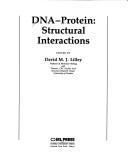
ISBN: 019963453X 0199634548 9780199634545 9780199634538 Year: 1995 Volume: 7 Publisher: Oxford [etc.] : Oxford University Press,
Abstract | Keywords | Export | Availability | Bookmark
 Loading...
Loading...Choose an application
- Reference Manager
- EndNote
- RefWorks (Direct export to RefWorks)
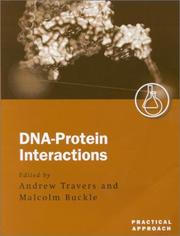
ISBN: 9780199636914 0199636915 Year: 2000 Publisher: Oxford: Oxford university press,
Abstract | Keywords | Export | Availability | Bookmark
 Loading...
Loading...Choose an application
- Reference Manager
- EndNote
- RefWorks (Direct export to RefWorks)
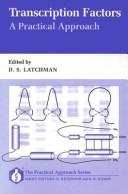
ISBN: 019963341X 0199633428 9780199633418 Year: 1993 Volume: 120 Publisher: Oxford : IRL Press at Oxford University Press,
Abstract | Keywords | Export | Availability | Bookmark
 Loading...
Loading...Choose an application
- Reference Manager
- EndNote
- RefWorks (Direct export to RefWorks)
The pivotal role played by transcription factors in regulating gene expression has ensured that their study is a major area of current research activity. This book provides a comprehensive description of all the approaches and methods required to identify, isolate and characterize transcription factors. Starting with a specific DNA sequence, these protocols allow the detection and identification of proteins that bind to it and detailed analysis of the DNA binding site. This is followed by procedures for the functional assay of transcription factors and their purification. Also included are methods for the characterization of transcription factor genes, including DNA cloning. The analysis of transcription factors is of central interest to all molecular biologists involved in studying gene expression, making this book an important text for a wide range of researchers from postgraduate students to established scientists.
Transcription Factors --- DNA-protein interactions --- Genetic regulation --- Transcription factors --- Régulation génétique --- Facteurs de transcription --- physiology --- DNA-protein interactions. --- Genetic regulation. --- Transcription factors. --- physiology. --- Régulation génétique

ISBN: 0412259907 9401114803 9780412259906 Year: 1993 Publisher: London Chapman & Hall
Abstract | Keywords | Export | Availability | Bookmark
 Loading...
Loading...Choose an application
- Reference Manager
- EndNote
- RefWorks (Direct export to RefWorks)
Molecular biology --- DNA --- Bacterial Proteins --- RNA --- DNA-protein interactions --- ultrastructure --- Basic Sciences. Chemistry --- DNA-protein interactions. --- DNA-BINDING PROTEINS --- Eukaryotic cells --- Rna polymerases --- Transcription --- Biochemistry --- Proteins and Enzymes --- genetic --- DNA-BINDING PROTEINS. --- Eukaryotic cells. --- Rna polymerases. --- Proteins and Enzymes. --- genetic. --- Basic sciences. chemistry --- Dna-binding proteins. --- Dna-protein interactions. --- Proteins and enzymes. --- Genetic. --- Biochemie. --- DNA - ultrastructure --- RNA - ultrastructure
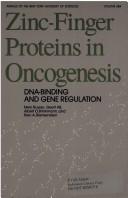
ISBN: 0897667832 0897667840 9780897667845 Year: 1993 Volume: 684 Publisher: New York, NY : New York Academy of Sciences,
Abstract | Keywords | Export | Availability | Bookmark
 Loading...
Loading...Choose an application
- Reference Manager
- EndNote
- RefWorks (Direct export to RefWorks)
Conferences - Meetings --- Zinc-finger proteins --- DNA-protein interactions --- Transcription factors --- Genetic regulation --- Carcinogenesis --- Zinc fingers --- Zinc proteins --- Genetic transcription factors --- Proteins --- DNA-protein binding --- Interactions, DNA-protein --- Protein-DNA interactions --- DNA-ligand interactions --- Protein binding --- Congresses --- DNA-Binding Proteins. --- Zinc-finger proteins - Congresses. --- DNA-protein interactions - Congresses. --- Carcinogenesis - Congresses. --- Transcription factors - Congresses. --- Genetic regulation - Congresses. --- Transcription, genetic
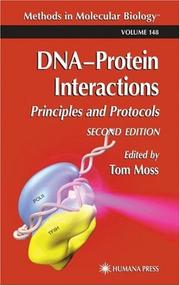
ISBN: 0896036251 0896036715 0585403228 9786610830183 1280830182 1592592082 9780896036710 9780896036253 Year: 2001 Volume: 148 Publisher: Totowa, NJ : Humana Press : Imprint: Humana,
Abstract | Keywords | Export | Availability | Bookmark
 Loading...
Loading...Choose an application
- Reference Manager
- EndNote
- RefWorks (Direct export to RefWorks)
DNA-protein interactions are fundamental to understanding biological growth, development, differentiation, evolution, and disease, and are also increasingly important to the biotechnology industry. In DNA-Protein Interactions: Principles and Protocols, 2nd Edition, Dr. Tom Moss assembles the new standard collection of cutting-edge techniques to identify key protein-DNA interactions, define their components, and determine the nature of their interactions and their manner of function, both in the cell and in the test tube. Each detailed method has been optimized and tested by a hands-on expert to ensure experimental success, and provides helpful notes on pitfalls to avoid, as well as alternate strategies. The techniques span a wide range, from factor identification to atomic detail, and include multiple DNA footprinting analyses, including in vivo strategies, gel shift (EMSA) optimization, SELEX, surface plasmon resonance, site-specific DNA-protein crosslinking, and UV laser crosslinking. There are also vanguard methods for designing proteins to fit DNA, site-specific protein-directed DNA cleavage, and 2D semicrystalline arrays of nucleoproteins for structure determination. Comprehensive and broad ranging, DNA-Protein Interactions: Principles and Protocols, 2nd Edition, offers a stellar array of over 100 up-to-date and readily reproducible techniques that biochemists and molecular, cellular, and developmental biologists can use successfully today to illuminate DNA-protein interactions.
DNA-protein interactions --- DNA-protein interactions. --- Electronic books. -- local. --- Protein binding. --- Nuclease Protection Assays --- Proteins --- Genetic Techniques --- Amino Acids, Peptides, and Proteins --- Investigative Techniques --- Analytical, Diagnostic and Therapeutic Techniques and Equipment --- Chemicals and Drugs --- DNA Footprinting --- DNA-Binding Proteins --- Human Anatomy & Physiology --- Health & Biological Sciences --- Animal Biochemistry --- Life sciences. --- Cell biology. --- Life Sciences. --- Cell Biology. --- Cell biology --- Cellular biology --- Biology --- Cells --- Cytologists --- Biosciences --- Sciences, Life --- Science --- Cytology.
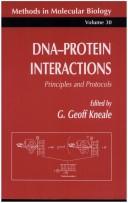
ISBN: 0896032566 1592595170 9780896032569 Year: 1994 Volume: 30 Publisher: Totowa, NJ : Humana Press : Imprint: Humana,
Abstract | Keywords | Export | Availability | Bookmark
 Loading...
Loading...Choose an application
- Reference Manager
- EndNote
- RefWorks (Direct export to RefWorks)
The study of protein-nucleic acid interactions is currently one of the most rapidly growing areas of molecular biology. DNA binding proteins are at the very heart of the regulation and control of gene expression, replication, and recombination: Enzymes that recognize and either modify or cleave specific DNA sequences are equally important to the cell. Some of the techniques reported in this volume can be used to identify previously unknown DNA binding proteins from crude cell extracts. Virtually all are capable of giving direct information on the molecular basis of the interaction—the location of the DNA binding site; the strength and specificity of binding; the identities of individual groups on specific bases involved in binding; the specific amino acid residues of the protein that interact with the DNA; or the effects of protein binding on gross conformation and local structure of DNA. The recognition of DNA sequences by proteins is a complex phenomenon, involving specific hydrogen bonding contacts to the DNA bases ("direct readout") and/or interactions with the sugar-phos phate backbone ("indirect readout"). The latter interactions can also be highly specific because of sequence-dependent conformational changes in the DNA. In addition, intercalation of planar aromatic amino acid side-chains between the DNA bases can occur, most notably with single-stranded DNA binding proteins. Furthermore, when bound, many DNA binding proteins induce drastic structural changes in the DNA as an integral part of their function.
DNA-protein interactions --- ADN --- DNA --- Protéine --- proteins --- Acide nucléique --- Nucleic acids --- Protéine de liaison --- Binding proteins --- Synthèse protéique --- protein synthesis --- DNA-protein interactions. --- Electronic books. -- local. --- Protein binding. --- Genetic Techniques --- DNA-Binding Proteins --- Proteins --- Investigative Techniques --- Amino Acids, Peptides, and Proteins --- Analytical, Diagnostic and Therapeutic Techniques and Equipment --- Chemicals and Drugs --- Animal Biochemistry --- Human Anatomy & Physiology --- Health & Biological Sciences --- DNA-protein binding --- Interactions, DNA-protein --- Protein-DNA interactions --- DNA-ligand interactions --- Protein binding --- Binding, Protein --- Biochemistry --- Allosteric proteins --- Radioligand assay --- DNA. --- Biochemistry. --- Biochemistry, general. --- Biological chemistry --- Chemical composition of organisms --- Organisms --- Physiological chemistry --- Biology --- Chemistry --- Medical sciences --- Composition
| Listing 1 - 7 of 7 |
Sort by
|

 Search
Search Feedback
Feedback About UniCat
About UniCat  Help
Help News
News